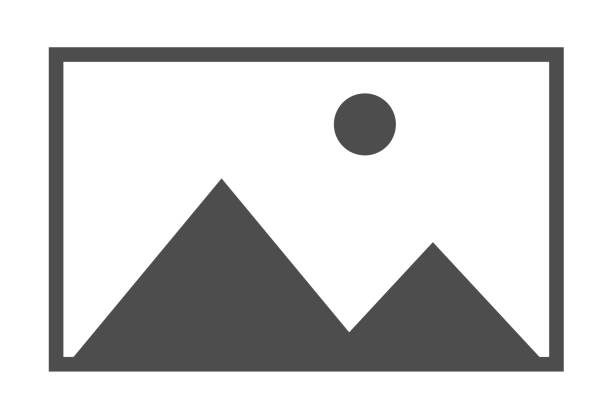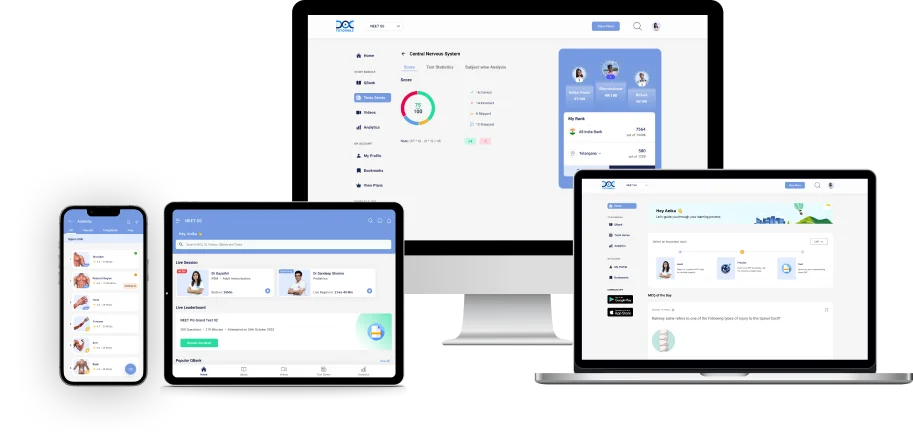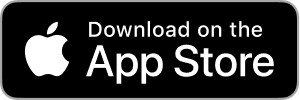MBBS Freshers’ Kit: From Stethoscope to Lab Coat – Complete Checklist
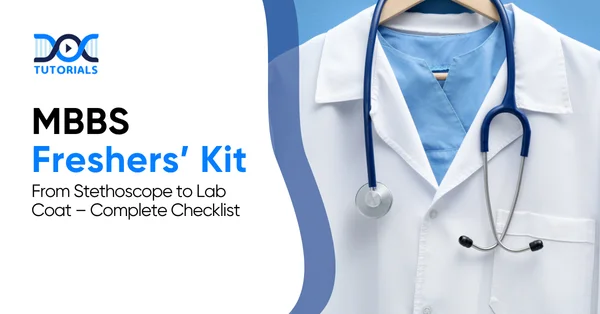
At the start of your MBBS, both excitement and hardships accompany you. The initial-year MBBS programme established by the National Medical Commission (NMC) in India comprises three core subjects, namely Anatomy, Physiology, and Biochemistry. To manage these tiresome courses effectively, students require a well-prepared fresher kit that includes necessary study tools and clinical equipment.
This guide is tailored to NEET-qualified students entering medical college. It includes a comprehensive list of all items to include in the checklist, such as stethoscopes, lab coats, textbooks, and dissection tools.
By the end of this guide, you will be fully acquainted with the things you need to pack so that you remain organised, confident, and ready to make the most of your first year in MBBS.
Why Does an MBBS Freshers’ Kit Matter?
In the initial year of medical college, students are given lots of tasks to handle simultaneously, including extensive hours spent staring at anatomy dissection slides, physiology practicals, and biochemistry lab classes. Besides that, adapting to hostel life is another adjustment issue.
Having a well-prepared freshers’ kit from the very beginning makes a huge difference. It also makes sure that when needed, you are equipped with all the necessary tools and materials. Not only does it keep you organised, but it can also save you valuable time and unnecessary stress.
Essential Clinical Tools for MBBS Freshers
- Stethoscope
During clinical training, a good stethoscope is essential when performing the auscultation process. You can hear the sounds of the heart, lungs, and abdomen, typically when using a sphygmomanometer to measure blood pressure.
Littmann Classics or MDF MD One are popular models for beginners. Wear a neutral colour (black or navy) to keep the appearance professional, and purchase comfortable earpieces.
- Lab Coat
Your entrance into a career in medicine is marked by your sharp white lab coat. Not only does it make you appear like a medical professional, but it also helps with hygiene. The medical profession perceives the white coat as a symbol of professionalism and power.
During actual work in the laboratory and other clinical placements, wearing a lab coat will protect your clothes and contribute to a professional mentality. Keep at least two coats – in case one is being washed or is tattered, there will always be a clean spare.
- Dissection Kit
Accurate instruments are needed in the anatomy practicals. A basic package consists of scalpel handles and a blade, dissecting scissors, blunt and pointed forceps, probes, and needles. Carrying your own kit will help you familiarise yourself with the tools and take care of them.
Get some stainless steel tools that fit perfectly in your hand, and keep them in a durable case to ensure every tool is secured.
- Pen Torch
A medical penlight is a torch that is utilised in examining the throat or nasal passages, as well as in checking the pupils. It is normally equipped with a small ruler pupil gauge on the barrel. Buy an LED torch made of aluminium; it is strong and bright. Consider keeping an additional battery backup to ensure uninterrupted use during patient examination.
- Thermometer
In physiology and clinical skills classes, you will have to measure body temperature. A computerised clinical thermometer is quick and precise (avoid hazardous mercury models). Find a digital thermometer which has a waterproof case, and carry it in a small pouch.
- Reflex Hammer
A reflex hammer is used to check the nervous system in a neurological examination by producing reflex reactions such as deep tendon reflexes (e.g. knee-jerk). It does not have to be a Babinski hammer; a simple Taylor hammer (triangular rubber head) can be used in the first year.
Test reflexes by making sure the hammerhead is balanced and using the correct type of wrist motion.
- Gloves
Labs and examinations will need disposable gloves (latex or nitrile), which are necessary for hygiene. Be sure you bring plenty of pairs in the lab bag. Get powder-free gloves in various sizes so you always have a snug fit; wearing gloves that are too loose or too tight can hinder dexterity.
- Scrubs
Two-piece scrubs with comfortable fits are often essential in anatomy labs and messy practicals. They cover your clothes and can assist in enforcing the lab hygiene measures. Select breathable, wrinkle-free fabric (cotton blend) and a normal colour (navy or green).
A number of colleges permit ordinary dress in lectures; however, check your college dress code in the event of a lab.
- Anatomy Atlas
An anatomy atlas will be essential in the visual learning process. The atlas by Netter is popularly described as a masterful work, a needed resource, and a lifetime medical reference. Follow a good atlas, one with plain drawings and named diagrams. Having a physical copy is convenient in cadaver dissection labs where one may be required to check up on structures on-site.
Academic Resources: Books for MBBS First Year
In addition to tools, you will require good textbooks on first-year subjects. Generally, the following are suggested:
| Subject | Recommended Books | Why These Books Matter |
| Anatomy | – B.D. Chaurasia’s Human Anatomy (3 Volumes)- Gray’s Anatomy for Students- Vishram Singh’s Clinical Anatomy- Netter’s Atlas of Human Anatomy | – B.D. Chaurasia is ideal for Indian MBBS students with clear regional illustrations.- Gray’s Anatomy is globally recognised as the gold-standard reference.- Vishram Singh brings theory and clinical examples together.- The Atlas of Netter aids the visual information processes using quality diagrams. |
| Physiology | – Guyton and Hall Textbook of Medical Physiology- BRS Physiology (Linda Costanzo)- Indu Khurana’s Textbook of Physiology- A.K. Jain’s Textbook of Physiology | – Guyton and Hall is comprehensive and globally acclaimed.- BRS Physiology is to the point and ideal for NEET-based quick study.- Indian authors such as Khurana and Jain are consistent with the syllabus of NMC MBBS, and they contain practice questions. |
| Biochemistry | – Harper’s Illustrated Biochemistry (South Asian Edition)- Vasudevan’s Textbook of Biochemistry- Lippincott Illustrated Reviews: Biochemistry- Jambhulkar’s Textbook of Biochemistry | – Harper’s and Vasudevan are typical first-year MBBS textbooks.- Lippincott describes ideas in easy form through colour illustrations.- Jambhulkar is brief, thus perfect for preparing for exams. |
| Embryology | – Langman’s Medical Embryology- Inderbir Singh’s Human Embryology | – The stages of development are explained in both books.- Has diagrams and clinical notes of congenital defects, which are important in Anatomy and Pathology integration. |
| Histology | – Inderbir Singh’s Textbook of Histology- Histology Atlas (Print or Digital) | Offers a good background in microscopic anatomy and clinical correlations.- Easy identification of tissue slides by using histology atlases or apps. |
The books have their strengths (depth, clarity, or practice questions), and therefore, most of the students are using 2-3 books per subject. Wherever feasible, consult the original NMC/Medical Council recommended list. Indicatively, anatomy books such as Gray and Chaurasia are found on numerous college reading lists.
Bone Set: A Crucial Tool for Anatomy
Learning the bones of the body takes one year during the first year of the MBBS programme. A nice model of a human skeleton, especially disarticulated (i.e., the bones can be pulled out and analysed separately), is an incredible blessing.
A boneset is a study partner of a student throughout the year. It comprises the skull (broken into parts), vertebrae, ribs, limbs, and girdles. Disarticulated sets often come on a stand or with connectors; they can be heavy, so designate a stable study area for them.
Buying a bone set may be expensive, but senior students often sell their used sets, and you can do the same after finishing your anatomy course.
Physiology Instruments for MBBS Practical Sessions
Physiology labs involve both sophisticated machines and simple instruments. The college provides much of the expensive equipment (ECG machines, spirometers, respirometers, etc.). Nevertheless, it can be useful to have your personal set of simple tools:
- ECG & Spirometer: Cardiopulmonary monitoring devices (mostly available in the lab). Their applications will be examined in demonstrations and exams.
- Stethoscope & BP Cuff: A stethoscope (in addition to the one in the kit) and a personal sphygmomanometer are common among medical students. These assist you in practice in reading blood pressure and hearing breath/heart sounds without being in a lab.
- Stopwatch: It is helpful to have a simple digital watch or stopwatch to measure times of experiments (e.g. reflex latencies, exercise tests).
- Measuring Tape: Limb or chest circumference can be measured with a cloth measuring tape (used in tailoring) for physiological parameters such as lung volumes or fitness tests.
In the case of student budget kits, seek the ones sold to med students (e.g. economy sphygmomanometers with a stethoscope set). They are less expensive and will serve for practice.
Quick Reference Checklist for MBBS Fresher’s Kit
Keep this checklist handy as you shop and pack. It summarises quantities and notes for each item:
| Item | Qty | Notes |
| Stethoscope | 1 | Reliable brand (e.g., Littmann); used for auscultation. |
| Lab Coat | 2 | Durable, multiple pockets; have a spare for rotation. |
| Dissection Kit | 1 set | Contains scalpels, forceps, scissors, and probes. |
| Pen Torch (Penlight) | 1 | LED with pupil gauge; carry extra batteries. |
| Thermometer | 1 | Digital clinical thermometer (avoid mercury). |
| Reflex Hammer | 1 | Taylor or Buck hammer for neuro exams. |
| Gloves (Latex/Nitrile) | As needed | Comfortable fit; stock a box for lab safety. |
| Scrubs (Top & Pants) | 2–3 sets | Breathable, washable uniforms (often in blue/green). |
| Anatomy Atlas | 1 | e.g. Netter’s Atlas of Human Anatomy. |
| Notebooks & Stationery | — | Good quality notebooks, lab pads, pens/highlighters. |
| Anatomy Books | 3–4 | e.g. B.D. Chaurasia, Gray’s Anatomy, Vishram Singh. |
| Physiology Books | 2–3 | e.g. Guyton & Hall, Costanzo, A.K. Jain. |
| Biochemistry Books | 2–3 | e.g. Harper’s, U. Satyanarayana, Lippincott. |
| Embryology Books | 1–2 | e.g. Langman, Inderbir Singh. |
| Histology Books | 1–2 | e.g. Inderbir Singh. |
| Bone Set (Skeleton) | 1 | Disarticulated human skeleton model (skull included). |
| Physiology Instruments | As needed | BP cuff, stethoscope, stopwatch, tape measure, etc. |
| Laptop / Tablet | 1–2 | For notes, e-books, and research. |
Recommended MBBS Starter Kits
Some companies package many of the above items into starter kits. For convenience, consider these curated bundles (if within budget):
- MBBS Freshers’ Starter Kit (Myaskro): This complete kit has some of the essentials, such as a dissection kit, a model skeleton (bone set in an articulated stance), a lab coat, a stethoscope, gloves, etc. It is structured in a way that it suits the first-year requirements of medical students.
- Future Doctors Kit (Apprentice Doctor): An internationally marketed kit plus online course. It includes a Rappaport stethoscope, a blood pressure cuff, basic supplies and a beginner course. (The kit is popular among younger potential clinicians; it can be used as a fun add-on to the conventional college curriculum.)
These bundles have the ability to save time, as long as they have good versions of instruments. Alternatively, you can create your own kit by purchasing a small set of essential items individually (particularly nicer stethoscopes or microscopes) and finding others in your community.
Tips to Stay Organised When Buying an MBBS Starter Kit
Here are a few basic tips to keep yourself organised while starting the journey of MBBS:
- Budget Wisely: Quality must be high, but do not spend a fortune on the most sophisticated models when less expensive ones fit the bill. Check the prices and reviews, and consider acquiring some of these items second-hand or at student prices.
- Check College Requirements: Many colleges have a dress code or supply some items (such as dissection slabs or microscopes). Make sure to note what is obligatory (colouring, PPE, whether or not you need to carry your own laptop, and so on) to avoid purchasing redundant duplicates of those things.
- Stay Organised: Use a sturdy backpack or lab bag to carry your kit. It is good to have a checklist or an inventory in the bag (gloves, torch, notebook, etc.) to make sure that nothing gets lost. Label your instruments or kit to ensure that they are not confused with those of others in laboratories.
- Practice Hygiene: Clean the tools and lab coat after each use. Wipe your stethoscope diaphragm with alcohol wipes between patients, wash or iron lab coats on a regular basis, etc. Bring an extra mask and sanitiser. Hygiene is paramount in medicine.
The appropriate tools and study materials will help you be better prepared to attend lectures and labs.
FAQs About MBBS Freshers’ Kit
- Do I need to buy my own dissection kit as an MBBS fresher?
Cadaver dissection entails special equipment. The college lab usually gives out a classic kit (scalpels, scissors, forceps, probes, etc.). Nonetheless, owning your own kit guarantees that you have the instruments you are used to and that they are in good condition when required. As a point of reference, a typical student dissection set includes such items as scalpels, forceps, scissors, and probes.
- Should I invest in a laptop or a tablet for studying MBBS?
Both have advantages. A laptop (Windows/macOS) is most suitable for taking lots of notes, writing papers, and installing programs (statistics applications, presentations, etc.). Meanwhile, a tablet (iPad/Android) is portable and is best used for reading e-books, PDFs, and creating diagrams. Having a laptop for assignments and projects and a tablet for e-textbooks or video lectures is a setup often used by many students.
- Do I need to buy all the MBBS textbooks right before college begins?
You do not necessarily have to purchase all the textbooks at once. Most seniors recommend waiting a few weeks to get a feel for what your professors recommend. In the meantime, you can use PDFs or check them out of the library. When you feel comfortable with what your instructors like as reference materials, spend money on good hard copies of your core reference books.
- What kind of stethoscope should I buy: a basic or premium model?
Students are advised to purchase a stethoscope that is sound, durable, and economical. This is because you don’t need the most expensive model in the first year; a good basic one (dual head, decent diaphragm) is what you need at the very beginning.
- Which physiology equipment should I be familiar with in the MBBS first year?
A sphygmomanometer (blood pressure), thermometer, stopwatch (reaction time and reflexes), measuring tapes, and a pen torch are the physiology equipment you should be familiar with in the MBBS first year.
Conclusion
To start your MBBS journey smoothly, make sure your freshers’ kit includes all essentials — from stethoscopes and lab coats to textbooks and practical instruments. A complete kit will get you organised, reduce stress, and enable you to concentrate on the challenging first-year courses such as Anatomy, Physiology, and Biochemistry. Select quality, syllabus-based books and resources to increase knowledge and practical skills.
DocTutorials can be a great student companion in case you would like more guidance during your first year of MBBS. We can grow your clinical knowledge, make you an exam master, and help you study productively with 3D animated video lectures, an extensive question bank, past year question papers (PYQs), and real-time interactive sessions.
Explore the DocTutorials MBBS curriculum today!
Latest Blogs
-
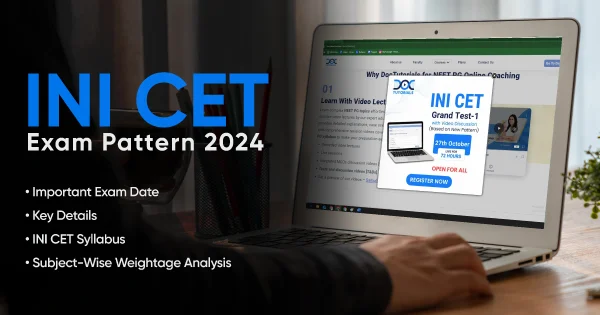
INI CET Exam Pattern 2025: A Complete Guide with Subject-Wise Weightage
The Institute of National Importance Combined Entrance Test (INI CET) is your key to entering some of the most prestigious…
-
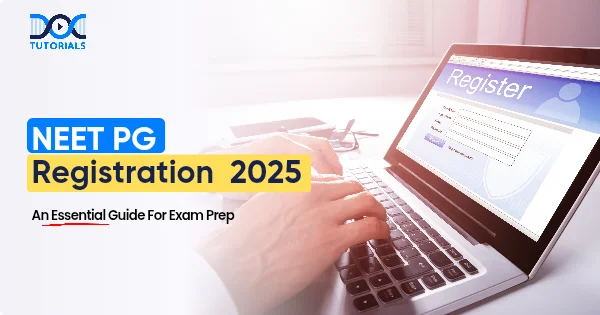
NEET PG Registration 2025: An Essential Guide For Exam Prep
The NEET PG registration, which is conducted online, is a crucial step in the exam process. Filling out the NEET…
-
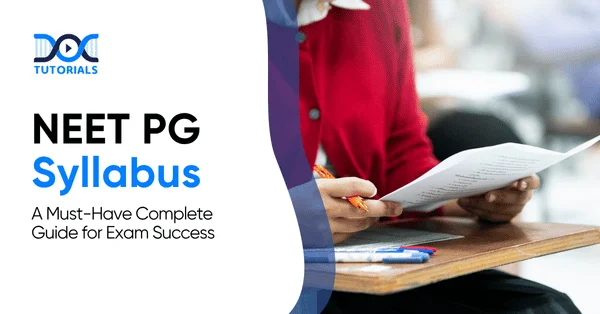
NEET PG Syllabus 2026: A Must-Have Complete Guide for Exam Success
The NEET PG Syllabus acts as one of the foundation stones for aspiring postgraduate medical students like you who are…
